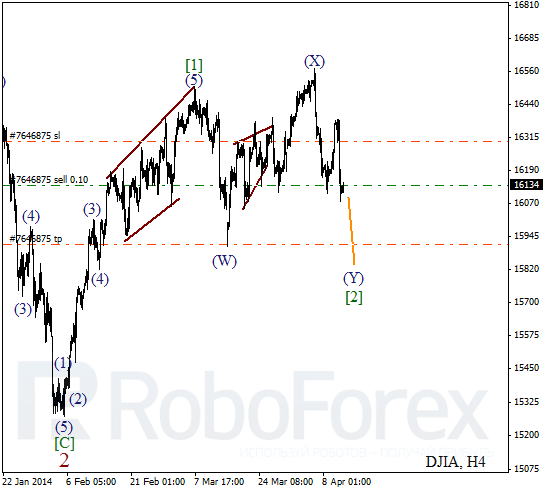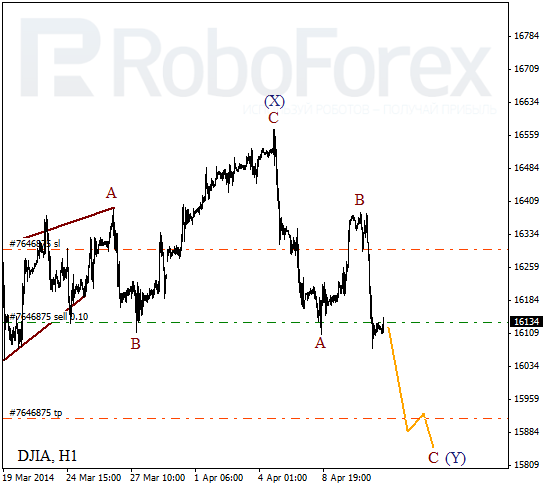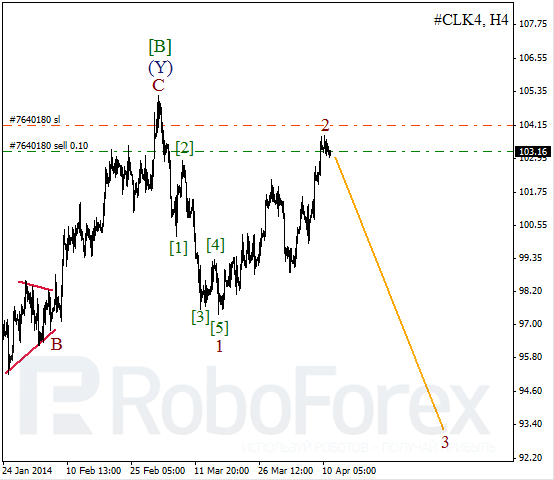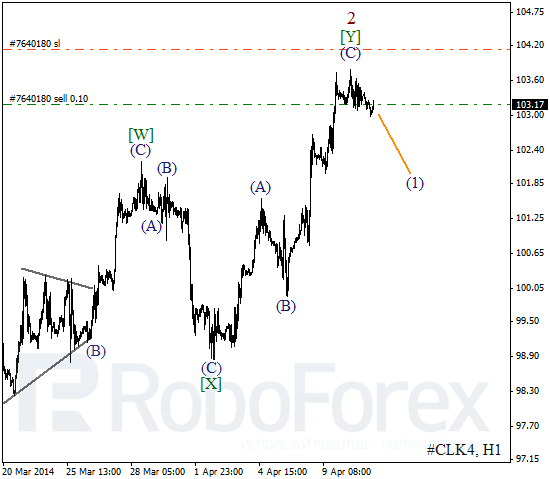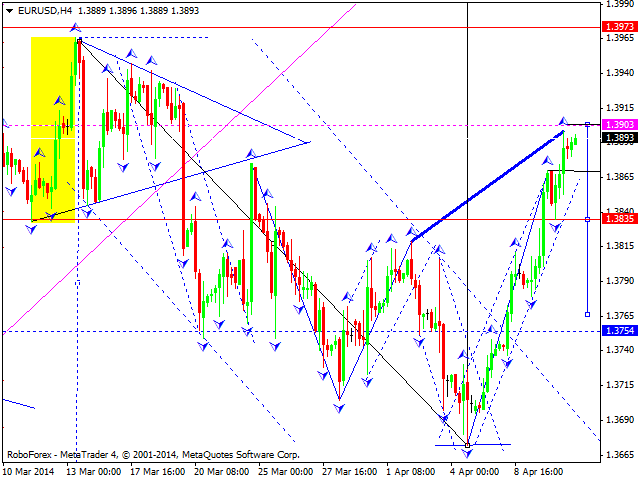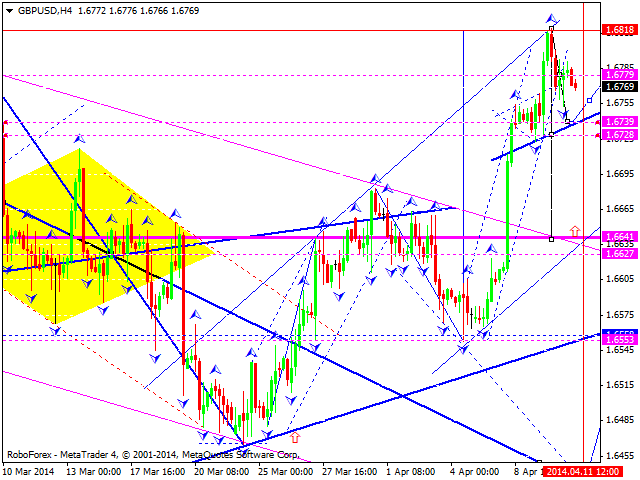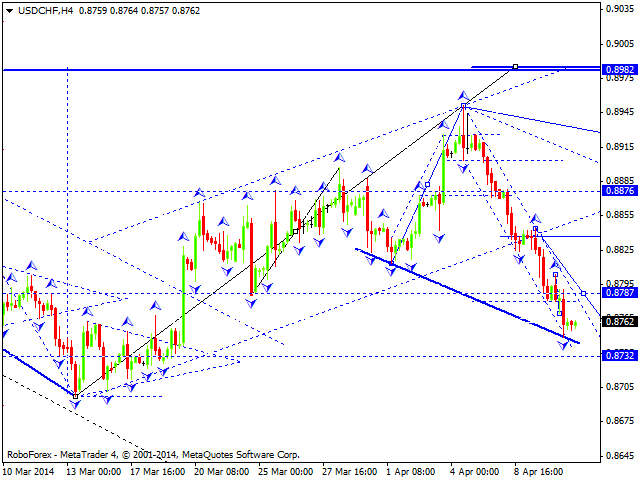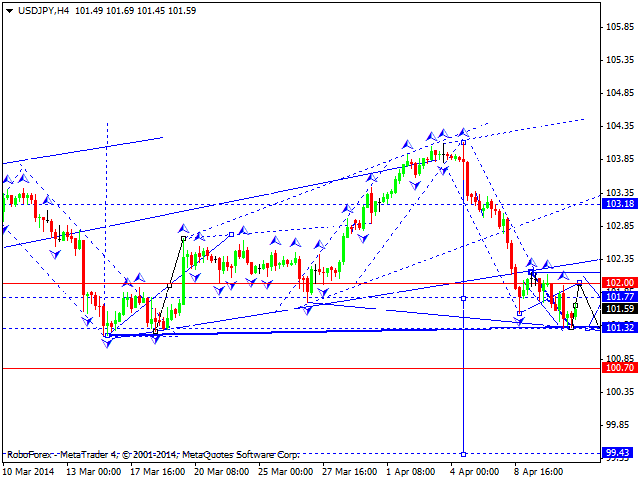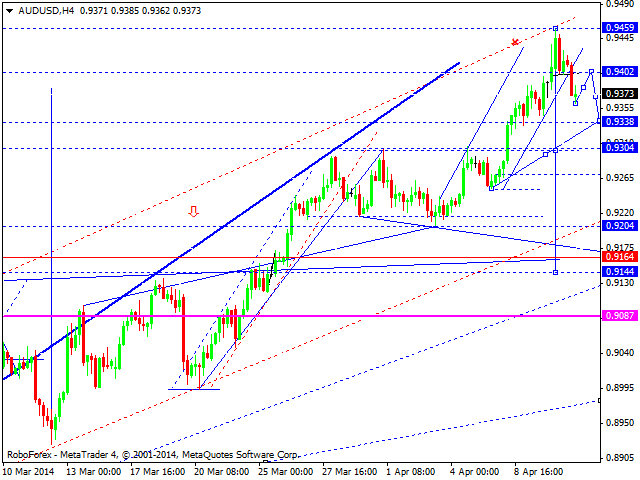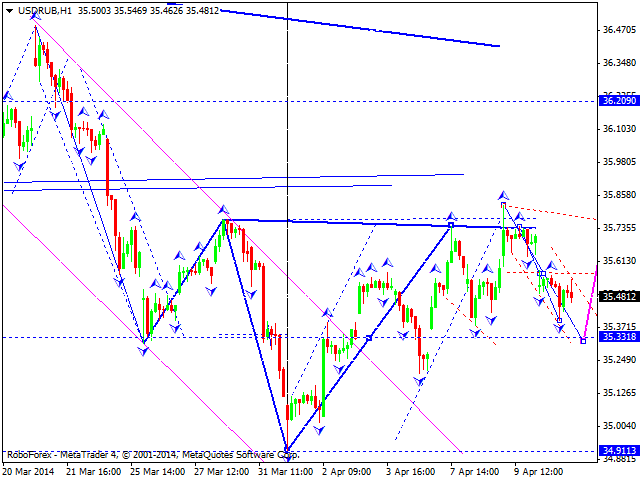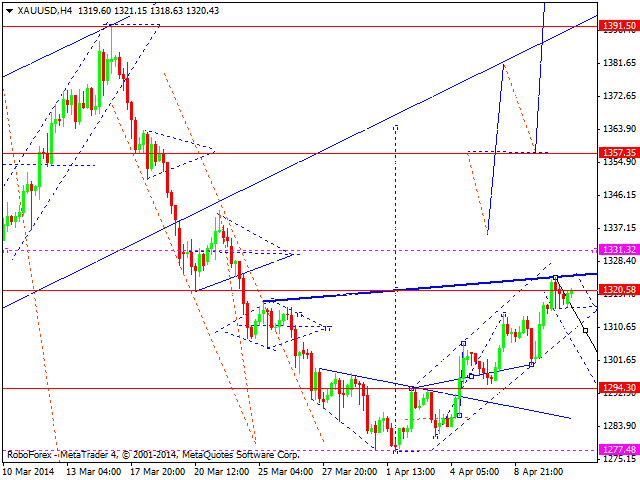Source: George S. Mack of The Life Sciences Report (4/10/14)
http://www.thelifesciencesreport.com/pub/na/dont-miss-the-boat-on-big-biotech-catalysts-keith-markey
Keith Markey, veteran analyst and science director of Griffin Securities, tells us the 2014 pipeline calendar is positively glowing with important milestones that could ignite portfolios. In this interview with The Life Sciences Report, Markey talks about four powerful biotech names with exciting early- to late-stage development projects and one medical device and supply company with serious growth potential. Be warned—huge catalysts are on the horizon that investors won’t want to miss.
The Life Sciences Report: We all understand the importance of catalysts in biotech stocks, but sometimes we’re not clear on which are the most powerful. Would you provide us with a general overview of the drug development stages and valuation points as you see them?
Keith Markey: We see a number of valuation-driving points in the drug development process. The first important inflection point is the submission of an investigational new drug (IND) application to the U.S. Food and Drug Administration (FDA), which is the company’s request to initiate clinical trials based on the preclinical research that’s been conducted. The next three valuation inflection points—in chronological order, as well as magnitude of importance—include having Phase 1 data, having Phase 2 data, and having Phase 3 data. At each step along that development pathway, more information is derived about the drug’s safety and efficacy, both of which are equally necessary for winning FDA approval.

Completing a Phase 1 clinical trial successfully, with an acceptable adverse event profile in a fairly small number of healthy patients, is evidence of the potential for demonstrating safety at some later point in time in a larger group of actual patients.
Phase 2 studies are typically designed to gain additional safety information within the target patient population, while also providing an initial indication of the drug’s efficacy. The Phase 3 trial will either make or break the drug and decide whether it will be approved. If efficacy is successfully proven and if the drug still appears safe in a larger patient population, chances are high for an FDA approval.
The next inflection point would be the new drug application (NDA) submission, though this step is not nearly as exciting to the investment community as getting pivotal Phase 3 data. The NDA just means that the company was able to assemble all the necessary cumulative clinical data and provide it to the FDA.
The final inflection point occurs during the FDA’s advisory committee (AdCom) meeting, where a disease-specialty panel votes on the drug. The date for the Prescription Drug User Fee Act (PDUFA) is the FDA’s target date for deciding the drug’s fate.
TLSR: We might think of the AdCom meeting as a huge valuation driver because that’s when the panel votes yes or no on a drug, but in some cases, a positive vote and drug approval might be baked into investor community perception. AdCom meetings can vary greatly as value-creation points, can’t they?
KM: They can, and that’s an interesting point. Some AdCom meetings are held in high regard and considered to be a very important determinant of whether a drug is going to get approved or not. I do recall a number of AdCom meetings that have given rise to a significant increase in a stock’s value, but those are most likely instances in which there has been uncertainty over whether the FDA would approve the drug, and therefore the investment community wasn’t as confident about the drug’s safety and efficacy data. In these cases, the advisory committee’s support of a drug would provide the first true evidence of how the experts are viewing the drug and how it should be used.
TLSR: This makes me think of a name in your active coverage— MannKind Corp. (MNKD:NASDAQ), with its inhalable insulin product Afrezza (human insulin of recombinant DNA origin delivered via Technosphere particles). It had an AdCom meeting on April 1 and the PDUFA date is now set at July 15. Sometimes the FDA doesn’t have an AdCom meeting, but in the case of Afrezza, I’m thinking it was necessary because the agency made MannKind jump through so many hoops during the drug approval process, including extra trials and years of added development. Do you think that’s the FDA’s reason for holding an AdCom meeting? To finally pull all that information together?
KM: Yes. It’s a rather complex drug application. Insulin is a biologic, and we clearly know how it functions, but it’s being delivered attached to a unique particle MannKind calls Technosphere, through a route of administration that is not typical—pulmonary absorption. Also, the inhalation delivery device, called Gen-2 or Dreamboat, is brand new, as it had to be specifically created for this particular drug. I suppose the FDA felt that this AdCom was the best way to be certain that all factors and data were being addressed. And indeed, that was the case—the advisory committee weighed the merits of the drug thoroughly. I think the experts’ near-unanimous support of Afrezza for both type 1 and type 2 diabetes was a strong signal to the FDA in favor of approval.
TLSR: Keith, no one could deny that the approval vote on Afrezza was anything but a positive event. Yet, looking at the relative strength of MannKind shares over the past six months, I get the feeling that some investors are looking at opportunities to sell. What do you think?
KM: I hate to say it, but that attitude certainly exists. There are a number of people who have made a fair amount of money shorting MannKind stock over the years, partly because of the amount of time that it’s taken to develop the drug and take it over the various hurdles of the regulatory process. There are still a number of people out there who are betting against it, simply because they have made a fair amount of money on it in the past, and probably feel that they can do the same again. It’s hard to know exactly where the stock is going to be when the next news breaks, but it’s possible that there could be corrections along the way to commercialization.
TLSR: Your target price on MannKind is $13/share. That’s more than a 100% implied return on this stock. At this point, and given what you’ve just said, are we now looking at MannKind as a market penetration and revenue story?
KM: It depends on how far out you’re looking. I think a couple of things are going to have to take place before we get to a true revenue-and-earnings story. We still have to get FDA approval, and we expect to see MannKind partner with a major drug company to market the product. It will need to be a company with a strong and experienced sales force dedicated to the family/general practitioner (GP) segment of the medical community.
The last time I spoke with Al Mann, MannKind founder and CEO, he said that his goal would be to find a good partner experienced in promoting drugs to the GP. Al knows that most diabetics are going to be treated first in the primary care setting, whether they are type 1 or type 2 diabetics. The more difficult cases will obviously be handed off to endocrinologists, who will be the key opinion leaders on uptake of the drug. For that reason, I think it will be equally crucial for MannKind to have some success penetrating that specialty-clinician market. After finding a marketing partner, it will probably take about six months from approval to launch. So, if we get the approval by July 15, the PDUFA date, that would place the launch in Q4/14 or early 2015.
In that interim, between approval and launch, we may have a relatively quiet period. The two companies—the partner pharma and MannKind—will start to work together while inventory builds. But that kind of work doesn’t really generate any news, and so investors will probably just have to sit tight for the actual revenue-and-earnings story to begin.
TLSR: Back in 2007, Pfizer Inc. (PFE:NYSE) didn’t even last a year with its inhalable insulin product Exubera (recombinant human insulin with particle diameters between1–5mm), which was developed by Nektar Therapeutics (NKTR:NASDAQ). Exubera’s inhalation device was an inconvenient and cumbersome bonglike device that was not really usable in a public place such a restaurant, and Pfizer eventually dumped the product and gave it back to Nektar. Clearly, MannKind’s palm-size Dreamboat inhalation device, designed for Afrezza, is a huge improvement over Exubera’s delivery device. But could Exubera’s failure be an overhang on MannKind’s shares?
KM: To a certain extent, I think it has been an overhang, because when people in the investment community hear “inhalable insulin,” they immediately think of Exubera. It has taken a fair amount of time to educate some investors about the difference. I imagine there’s also an overhang within some of the other major pharmaceutical companies that have watched Afrezza’s development, but remember what happened with Pfizer and Exubera. I don’t know exactly where MannKind is in the partnering process, but I know that it has been talking to multinational corporations and some regional companies in various parts of the world, and it may have had to overcome some reluctance to even discuss Afrezza. We may also see some overhang in the adoption by the medical community. The important thing is, I don’t think that the individual consumer—the diabetic patient—is going to care one iota about what happened with Pfizer and Exubera seven or eight years ago. I imagine, in their eyes, Afrezza offers a distinctly new approach to treating this chronic disease.
TLSR: Back in November, I spoke with Nobel laureate Craig C. Mello, who is a cofounder and member of the scientific advisory board of RXi Pharmaceuticals Corp. (RXII:NASDAQ; RXII:OTCQX). I see that your target price for RXi is $13.50/share, which would give investors more than a double from current levels. What is your growth theory for RXi?
KM: RXi has some very important valuation-driving events in progress, including a couple of clinical trials currently underway. One is for use of its connective tissue growth factor (CTGF) gene-targeting agent, RXI-109 (antisense oligonucleotide inhibitor of connective tissue growth factor [CTGF/CCN2] mRNA). RXI-109 is a small-interfering RNA (siRNA) molecule being tested as an adjunct to plastic surgery of the lower abdomen for scar revision, which will be administered at the time of the surgery. These patients are women who have had a hysterectomy or Cesarean section or abdominoplasty surgery that left a transverse scar of 11 cm in length or more. The other application of RXI-109 that’s in clinical trials involves surgical revision of keloids, another type of hypertrophic scar, but rather different than the one that normally would occur after a surgical procedure.
TLSR: These trials are designed so that each patient acts as her own control with half the hypertrophic scar injected in the abdominal scar revision field, or just one ear injected in the case of a keloid excision. It’s a sure way of eliminating age and genetic factors in a patient population and getting a true read on the efficacy of the drug. Was this design a top-management decision?
KM: Yes, it was. Geert Cauwenbergh, CEO of RXi, has a background with Johnson & Johnson (JNJ:NYSE) as head of research and development, and he worked a great deal in dermatology, so he’s clearly the right person for this particular task. Another smart decision will eliminate a drug-delivery problem we normally see with siRNA molecules when they are used systemically—simply getting these drugs to the right place is usually a very big hurdle. However, RXI-109 is injected locally and visibly into the scar revision field exactly where you want it to act. RXI-109 is designed with the company’s self-delivering technology specifically for rapid uptake into cells. It gets into the tissues you want and the cells comprising those tissues take up the drug. This particular approach eliminates that delivery issue entirely.
TLSR: In one of your recent notes, you made a very perceptive comment that the keloid trial added risk to the stock. When keloids are excised, they often return with a vengeance, because they’re a result of a genetic predisposition, whereas post-surgical scarring is a more normal phenomenon. If I were an investor in RXi, I would just as soon have the company not do this keloid trial until it got good proof of concept in the abdominal hypertrophic scar formation study. Am I being too cautious?
KM: The keloid indication is somewhat riskier to go after, but the size of the market and the fact that there really isn’t a suitable approach for treating keloids makes it an attractive opportunity. This keloid trial is not an enormous investment because there are only perhaps 16 people in this study, while there are about 22 million (22M) people in the U.S. with keloids. That’s an enormous population with no opportunity to seek relief from the condition. This treatment has tremendous potential for the company.
The Approval Process in Action (infographic)
Furthermore, the hypertrophic scar formation that arises post-hysterectomy is a very low-risk investment of time and money. The keloid indication is worth pursuing in this Phase 2 clinical trial, because the Phase 1 trials already demonstrated that the drug actually has an effect on dampening scar formation. I believe the reduction or prevention of abdominal scarring with the anti-CTGF drug RXI-109 is already pretty much proven.
TLSR: We should receive a data readout on these 16 patients sometime in Q2/14 or Q3/14. Is this a value-driving catalyst?
KM: Absolutely. But I think we’ll see the data from the hypertrophic scar formation trial sooner than we will the keloid indication.
TLSR: Are there other programs in the RXi pipeline that you find interesting?
KM: The company has a different formulation of RXI-109 that will be used for ophthalmic purposes, and is planning to start a trial in proliferative vitreoretinopathy in Q4/14. The standard treatment today is a vitreous surgical procedure and retinal attachment, but patients suffer loss of vision and retinal detachment commonly recurs, so this new treatment would definitely be merited. This indication is not being pursued just yet because RXi is still small and has limited resources, so it wants to keep its focus on the dermatological applications.
I would mention that the ophthalmic area actually has a larger portfolio of products now because of a deal RXi made with OPKO Health Inc. (OPK:NYSE) in March 2013, when it in-licensed all of OPKO’s RNA interference (RNAi)-related patents, which gives RXi a couple of other opportunities to pursue in the field of ophthalmology.
TLSR: Keith, you also follow Intrexon Corp. (XON:NYSE). The company came up in my recent conversation with JMP Securities Senior Analyst Michael King regarding OvaScience (OVAS:NASDAQ). Intrexon seems to partner or collaborate with other companies in one way or another. Could you tell me why you like it?
KM: Yes, Intrexon is the leader in synthetic biology and has been expanding its portfolio of technologies and capabilities through a couple of recent acquisitions. One that I’ve written about recently is the very important acquisition of Medistem Inc. (MEDS:OTC), a deal that closed on March 7. Medistem was developing endometrial regenerative cells for various clinical applications, and Intrexon saw something intriguing in the platform that would probably have broader uses. These specific stem cells don’t survive for very long in the human body; they don’t implant or durably engraft. Intrexon sees this as a unique opportunity to deliver new therapeutic molecules by creating new genes and inserting them into cells to produce a living biotherapeutic agent that expresses specific proteins. It could be a cytokine or a monoclonal antibody designed through a genetic engineering process. You could create a gene for a particular purpose, such as a specific cancer or an autoimmune disease.
TLSR: Before its $26M acquisition, Medistem had a market valuation in the mid-single digits—roughly a $6M market cap. Investors got a nice bump from this deal, for which they received cash and Intrexon stock. From what you say, it seems there was a tremendous amount of value languishing with Medistem’s cells prior to this acquisition. Is this Intrexon’s basic business model—adding value to other platforms?
KM: I think you hit the nail on the head. Because these endometrial regenerative cells don’t engraft in the human body, Medistem’s original thought of developing them as therapies just didn’t meet the objective. The question then became, “Well, what are they good for?” Without Intrexon having shown an interest in using the endometrial stem cells as delivery agents of synthetic biological products, Medistem probably would have fallen by the wayside entirely.
I think this was a great acquisition for both the Intrexon investors and the Medistem shareholders. Medistem investors should be able to reap some very nice rewards from the acquisition.
TLSR: Intrexon has a solid mid-cap valuation of $2.2 billion ($2.2B), and you recently raised your target price from $36/share to $40/share, which is quite significant in that it represents nearly a $300M increase in market valuation. Did you hike your target because of this Medistem acquisition?
KM: The acquisition was the driving force behind the target price increase. We don’t know exactly what the first two or three applications are going to be as a result of these stem cells and Intrexon’s synthetic biology platform, but I think the $4/share hike is really just an acknowledgement that the acquisition adds value to the company. Investors need to understand that this is not just a bolt-on acquisition—it’s going to be very important for the future of this company.
TLSR: I notice you follow Synthetic Biologics Inc. (SYN:NYSE.MKT), which is also partnered with Intrexon.
KM: The Synthetic Biologics/Intrexon partnership includes a couple of projects involving monoclonal antibodies. Synthetic Biologics is an interesting company. It’s making some progress in developing SYN-005, an antibody that will knock out whooping cough, or pertussis, and the toxin that is produced by Bordetella pertussis. This childhood disease has been lost in the mix of infectious diseases that children encounter, largely because there have been treatments for pertussis in the past. The treatments worked for a couple of decades, but the lack of herd immunity due to waning interest in immunization and the development of mutated, multidrug-resistant strains of B. pertussis has allowed this disease to return to a point where it requires some attention.
The company also has a monoclonal antibody, SYN-001, that targets hospital-acquired infections caused by Acinetobacter baumannii, which is in the discovery phase. With these new monoclonal antibodies, which Synthetic Biologics is producing in collaboration with Intrexon, there is going to be an opportunity to address these infections in a new fashion, by not only knocking out the bacterium but also removing the toxins, which can linger in the body for days after the bacterium that produced it has been killed.
TLSR: My understanding is that Synthetic Biologics initiated IND-enabling studies for SYN-005 to address pertussis recently. What is the stage of that drug’s development?
KM: The company is conducting a confirmatory large animal study that should report topline results in the current quarter. Assuming all goes well, the company will likely submit an IND in the not-too-distant future.
TLSR: The collaboration with Intrexon is interesting, but isn’t Trimesta (oral estriol) Synthetic Biologics’ primary driver right now? I notice that it’s already in Phase 2 studies for multiple sclerosis (MS).
KM: Trimesta’s trial is a near-term catalyst that everybody is getting excited about. Initially, Rhonda Voskuhl, an insightful neurologist at UCLA, noticed that when her patients with MS became pregnant, their symptoms diminished as the pregnancy progressed. She realized that something related to the pregnancy was having an effect on the disease activity, so she began a thorough investigation to identify what the potential agents were that could be responsible for that effect. What she found was the hormone estriol, which occurs only in pregnant women. Once pregnancy is initiated, estriol levels begin to rise from a relatively low level, and as the pregnancy progresses, estriol reaches a peak. After the baby is delivered, the hormone level falls and MS activity resumes pretty much where it left off.
This led Synthetic Biologics to develop Trimesta, which allows for oral administration of estriol to MS patients. Dr. Voskuhl will report the results from a very large Phase 2 clinical trial on April 29–30 at the annual American Academy of Neurology meeting in Philadelphia. If the data looks good, the drug would undoubtedly be out-licensed to a large pharma, providing Synthetic Biologics with a nondilutive source of capital.
TLSR: Is there another name you want to discuss?
KM: Unilife Corp. (UNIS:NASDAQ) is an interesting story that I started to follow about five years ago, when it was trading only in Australia. The company came to the U.S. to get closer to its primary customer, the pharmaceutical industry. It has developed a number of different drug delivery devices, all of which are patented. The company markets to pharmaceutical companies, which can utilize Unilife’s delivery devices and have the drugs ready for use by the patients themselves or their caregivers, physicians or nurses.
Over these last five years, Unilife has done a number of capital raises, most recently securing a $60M debt financing through a rather well-respected asset management company called OrbiMed. The terms of the deal include a $40M initial payment and two additional $10M tranches that will be available at the end of this year and at the end of 2015, assuming Unilife chooses to take them.
TLSR: What will Unilife use this capital for?
KM: The company is setting up new clean rooms for four high-speed production lines for its syringes. It’s completed deals with Sanofi SA (SNY:NYSE) and a generic drug company based in Jordan called Hikma Pharmaceuticals Plc (HIK:LSE), which sells most of its products in Europe. Unilife has also entered into supply agreements with Novartis AG (NVS:NYSE) for a targeted organ delivery system, and AstraZeneca Plc (AZN:NYSE) MedImmune subsidiary for a wearable drug pump for a variety of therapies.
TLSR: Keith, a $60M financing for a company with a $345M market cap makes me curious about how big these pharma deals are. Do you know the magnitude of these deals?
KM: Hikma will be using a minimum of 150M syringes/year by the time it’s three to four years into its contract with Unilife. Sanofi is going to have a minimum purchase order of 175M syringes/year, again within three to four years after shipping commences. All this additional production capacity is going to be used primarily for those two customers.
When I spoke with the Unilife people, I was reminded that Sanofi’s anticoagulant Lovenox (enoxaparin sodium injection) is already selling 400–450M doses/year in the U.S. alone, so four high-speed production lines producing about 200M syringes/year are actually indicative of the business volumes the company needs to be ready for in the next couple of years. The idea is to get them installed and running now in anticipation of that point in time. I don’t think anybody else has picked up on this growth story yet.
TLSR: OrbiMed had to perform deep diligence on this deal for the 10.25% per year it will earn over six years. It makes Unilife look derisked. Is there a growth component to this deal for OrbiMed?
KM: I have to agree with you about Unilife being derisked. And yes, there is a small growth component to the terms of the deal. OrbiMed will get a royalty rate starting at 2.75%, which will then decline as sales of the syringes and devices ramp up. This caps the overall royalty payments. I think this deal is indicative of just how Orbimed sees the growth opportunity in Unilife.
TLSR: Thanks so much for your time, Keith. I’ve enjoyed this very much.
KM: Thank you very much. I’ve enjoyed it, too, and look forward to our next exchange.
Keith Markey has been an equities analyst for more than 25 years, specializing in the biotechnology, pharmaceutical, medical device and research tools sectors. He is currently the science director for Griffin Securities Inc., an investment bank, where he follows emerging healthcare companies with novel technologies. He also works with privately owned companies, helping them restructure their operations, license products under development or near commercialization and raise funds from venture capital and high net-worth investors. In addition, Markey serves on the board of directors of DS Healthcare Group, which specializes in products that address hair loss. Previously, he held various managerial positions in the Research Department of Value Line Inc., publisher of the Value Line Investment Survey and Value Line Select. Markey began his career as a biochemist, working in the fields of endocrinology and neuroscience at New York University Medical School and Weill Cornell Medical College. His research, which involved several international collaborations and resulted in more than 30 scientific publications, contributed to the understanding of regulatory biochemistry of the nervous system and stem cell plasticity. Markey received his doctorate in neurochemistry from the University of Connecticut and a master’s degree in business administration and finance from the Leonard N. Stern School of Business at New York University.
Want to read more Life Sciences Report interviews like this? Sign up for our free e-newsletter, and you’ll learn when new articles have been published. To see recent interviews with industry analysts and commentators, visit our Streetwise Interviews page.
DISCLOSURE:
1) George S. Mack conducted this interview for Streetwise Reports LLC, publisher of The Gold Report, The Energy Report, The Life Sciences Report and The Mining Report, and provides services to Streetwise Reports as an independent contractor. He owns, or his family owns, shares of the following companies mentioned in this interview: None.
2) The following companies mentioned in the interview are sponsors of Streetwise Reports: RXi Pharmaceuticals Corp. and OPKO Health Inc. Streetwise Reports does not accept stock in exchange for its services.
3) Keith Markey: I own, or members of my family own, shares of the following companies mentioned in this interview: MannKind Corp. and Unilife Corp. Within the past 12 months, Griffin Securities Inc. has received compensation for investment banking and/or noninvestment banking services from the following companies mentioned in this interview: MannKind Corp., RXi Pharmaceuticals Corp., Synthetic Biologics Inc., Intrexon Corp. and Medistem Inc. The following companies mentioned in this interview are either currently, or within the past 12 months have been, clients of Griffin Securities Inc. with services consisting of investment banking and/or noninvestment banking services: RXi Pharmaceuticals Corp., Synthetic Biologics Inc., Intrexon Corp. and Medistem Inc. I was not paid by Streetwise Reports for participating in this interview. Comments and opinions expressed are my own comments and opinions. I had the opportunity to review the interview for accuracy as of the date of the interview and am responsible for the content of the interview.
4) Interviews are edited for clarity. Streetwise Reports does not make editorial comments or change experts’ statements without their consent.
5) The interview does not constitute investment advice. Each reader is encouraged to consult with his or her individual financial professional and any action a reader takes as a result of information presented here is his or her own responsibility. By opening this page, each reader accepts and agrees to Streetwise Reports’ terms of use and full legal disclaimer.
6) From time to time, Streetwise Reports LLC and its directors, officers, employees or members of their families, as well as persons interviewed for articles and interviews on the site, may have a long or short position in securities mentioned. Directors, officers, employees or members of their families are prohibited from making purchases and/or sales of those securities in the open market or otherwise during the up-to-four-week interval from the time of the interview until after it publishes.
Streetwise – The Life Sciences Report is Copyright © 2014 by Streetwise Reports LLC. All rights are reserved. Streetwise Reports LLC hereby grants an unrestricted license to use or disseminate this copyrighted material (i) only in whole (and always including this disclaimer), but (ii) never in part..
Streetwise Reports LLC does not guarantee the accuracy or thoroughness of the information reported.
Streetwise Reports LLC receives a fee from companies that are listed on the home page in the In This Issue section. Their sponsor pages may be considered advertising for the purposes of 18 U.S.C. 1734.
Participating companies provide the logos used in The Life Sciences Report. These logos are trademarks and are the property of the individual companies.
101 Second St., Suite 110
Petaluma, CA 94952
Tel.: (707) 981-8204
Fax: (707) 981-8998
Email: jluther@streetwisereports.com
